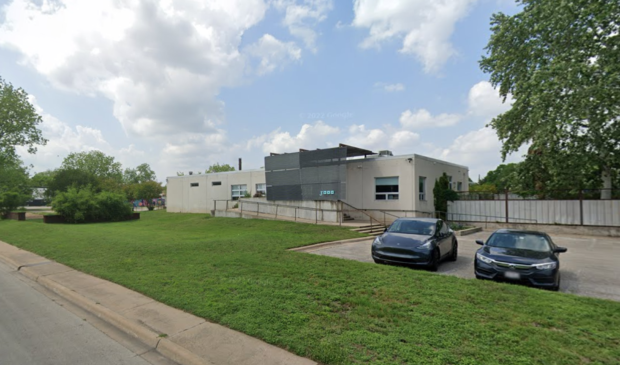Planning Commission OKs Vertical Mixed-Use zoning on East Cesar Chavez site
Thursday, September 29, 2022 by
Jonathan Lee The Planning Commission on Tuesday recommended approval of Vertical Mixed-Use (VMU) zoning for a property along East Cesar Chavez Street, moving a planned mixed-use residential development one step forward.
The project at 3020 E. Cesar Chavez St. could have around 185 units of housing – 19 of which would be affordable at 60 percent of the median family income – with the requested VMU1 zoning. Leah Bojo, representing the applicant for the rezoning, said the project is still in the early stages of planning.
Under the existing General Commercial Services-Mixed-Use (CS-MU-CO-NP) zoning, the project would likely have 90 units, none of which would be priced below market rate. A circa-1980s office building currently sits on the 2.4-acre site.
Daniel Llanes, the chair of the Govalle/Johnston Terrace Neighborhood Plan Contact Team, spoke against the rezoning. Llanes feared setting a precedent of VMU zoning on Cesar Chavez, thereby turning the street into “anywhere USA.” He argued that Airport Boulevard and East Seventh Street are the only streets in the neighborhood suitable for VMU.
The contact team declined to allow VMU on Cesar Chavez during an opt-in, opt-out process in 2008, when the city created VMU. In the time since, City Council has approved VMU zoning for several properties along Cesar Chavez.
“Austin was a very different place in 2008,” Bojo said. “While the median home prices and the average rent has more than doubled (since then), the median income for a single person has increased by less than 12 percent.”
Llanes said he would only support a project with more affordable housing. “There are very few people who can afford to live in my neighborhood who are from my neighborhood .… How about 40 percent of the units at 35 to 50 percent (MFI)? That’s real affordability.”
Projects with affordable units of the kind Llanes described usually require government subsidies.
If not for compatibility, a rule that limits the height of buildings near single-family homes, the project could have included even more affordable units, and potentially at a deeper affordability level.
The recently created VMU2 zoning category allows building heights of 90 feet, provided that 12 percent of units are affordable at 60 percent MFI or 10 percent of units are affordable at 50 percent MFI. But VMU2 does not work on the site because compatibility (triggered by single-family homes across Second Street and Cesar Chavez) limits building height to 55 feet. Without compatibility, the project could have 270 units, 40 of those affordable, Bojo said.
Commissioner Greg Anderson motioned to recommend approval of the rezoning. In doing so, he blasted compatibility and the neighborhood planning process.
“How are we tolerating (compatibility) another day in this city?” he said, pointing to expensive housing prices in East Austin that he says are due in part to such regulations.
Anderson also said, “Does it make sense for us to have a chair of a neighborhood association for 19 years?” referring to Llanes. “Maybe that’s one of the things that leads to the city auditor calling our neighborhood planning processes, our neighborhood plans out for being horrible,” he added in reference to a 2016 audit.
Commissioner Carmen Llanes Pulido, Llanes’ daughter, jumped in to defend the contact team.
“East Austin’s exorbitant now, but it has absorbed a tremendous amount of development,” Llanes Pulido said. She explained that the contact team is composed of several people with generational ties to East Austin and that the team has negotiated with the city on dozens of rezonings that led to wins for all parties involved.
The commission voted 7-1-1, with Llanes Pulido against and Commissioner Grayson Cox abstaining, to recommend City Council approve the rezoning. Council is set to discuss the case Oct. 27.
Photo caption: A view from East Cesar Chavez Street looking toward the site, currently home to a circa-1980s office building.
The Austin Monitor’s work is made possible by donations from the community. Though our reporting covers donors from time to time, we are careful to keep business and editorial efforts separate while maintaining transparency. A complete list of donors is available here, and our code of ethics is explained here.
You're a community leader
And we’re honored you look to us for serious, in-depth news. You know a strong community needs local and dedicated watchdog reporting. We’re here for you and that won’t change. Now will you take the powerful next step and support our nonprofit news organization?







